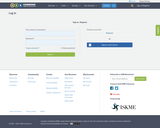
Simple angles worksheet for 4th grade math standard
- Subject:
- Geometry
- Material Type:
- Lesson Plan
- Author:
- Ashley Person
- Date Added:
- 06/12/2019

Simple angles worksheet for 4th grade math standard
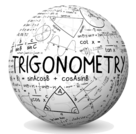
This resource contains information which may be used by students for self-directed learning. Teachers may use it to supplement their lessons.
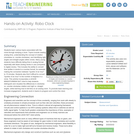
Students learn various topics associated with the circle through studying a clock. Topics include reading analog time, understanding the concept of rotation (clockwise vs. counter-clockwise), and identifying right angles and straight angles within circles. Many young students have difficulty telling time in analog format, especially with fewer analog clocks in use (compared to digital clocks). This includes the ability to convert time written in words to a number format, for example, making the connection between "quarter of an hour" to 15 minutes. Students also find it difficult to convert "quarter of an hour" to the number of degrees in a circle. This activity incorporates a LEGO® MINDSTORMS® NXT robot to help students distinguish and visualize the differences in clockwise vs. counter-clockwise rotation and right vs. straight angles, while learning how to tell time on an analog clock. To promote team learning and increase engagement, students work in teams to program and control the robot.
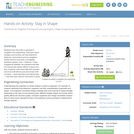
Students learn that math is important in navigation and engineering. They learn about triangles and how they can help determine distances. Ancient land and sea navigators started with the most basic of navigation equations (speed x time = distance). Today, navigational satellites use equations that take into account the relative effects of space and time. However, even these high-tech wonders cannot be built without pure and simple math concepts â basic geometry and trigonometry â that have been used for thousands of years.
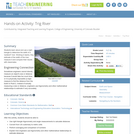
Students learn about and use a right triangle to determine the width of a "pretend" river. Working in teams, they estimate of the width of the river, measure it and compare their results with classmates.
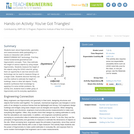
Students learn about trigonometry, geometry and measurements while participating in a hands-on interaction with LEGO® MINDSTORMS® NXT technology. First they review fundamental geometrical and trigonometric concepts. Then, they estimate the height of various objects by using simple trigonometry. Students measure the height of the objects using the LEGO robot kit, giving them an opportunity to see how sensors and technology can be used to measure things on a larger scale. Students discover that they can use this method to estimate the height of buildings, trees or other tall objects. Finally, students synthesize their knowledge by applying it to solve similar problems. By activity end, students have a better grasp of trigonometry and its everyday applications.